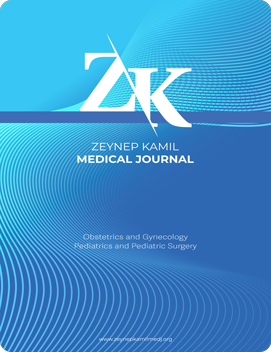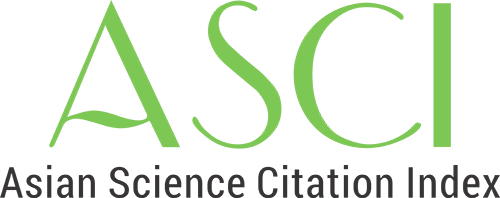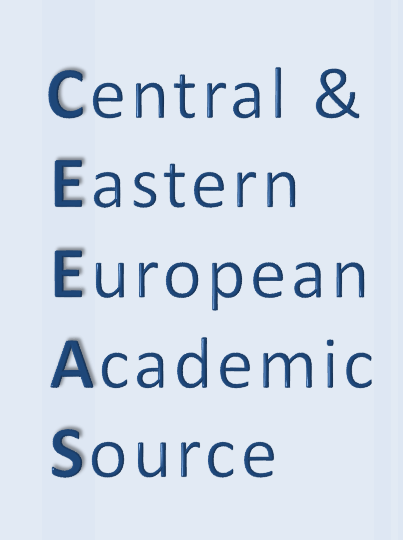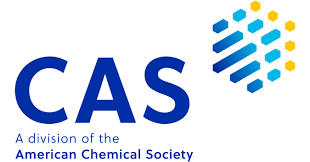Quick Search
Volume: 51 Issue: 3 - 2020
| 1. | Health Development Behaviors Of 10th Grade Students Of A High School: A Cross-Sectional Study Tuğba MelihaFatma Ercan doi: 10.14744/zkmj.2021.47966 Page 0 INTRODUCTION: This study was carried to explain the relationship between all of the following; family features, adolescents healthy living skills, school success and sociodemographic characteristics. METHODS: Study was done in a high school in Ankara at 8-15.12.2017. 10th class students of the high school create this researchs population(N=374,n=349,%93,3). This is a cross section research. Variables of the study are sociodemographic characteristics, health promotion behaviors of families, Adolescent Health Promotion Scale (AHPS-40 questions form), body mass index (Z-score), school success, body perceptions about their parents, using smartphone and tablet/pc, spending time with television. RESULTS: Time of using smartphone and tablet/pc, and the length of time spent in front of television were higher among schoolboys than schoolgirls. Also, schoolgirls were more successful than schoolboys. When assessment with AHPS is done, in total, it was seen that using of smartphone, tablet or TV less than two hours resulted in as a higher score than others under the following subtitles; life appreciation, health responsibility, stress management, social support. DISCUSSION AND CONCLUSION: In adolescence, to develop health promotion, using smartphone and tablet/pc should be decreased and supportive activities regarding nutrition and exercise behaviors should be applied to schoolgirls while life appreciation and health responsibility are applied to schoolboys. Furthermore, it should also be considered that developing of health promotions behaviors can cause increasing school success. |
| 2. | Early Results of Newborns Affected by Twin to Twin Transfusion Syndrome Aslı Okbay Güneş, Sevilay Topcuoğlu, Nilgun Karadag, Elif Özalkaya, Güner Karatekin doi: 10.16948/zktipb.604208 Pages 128 - 132 INTRODUCTION: The aim of this study was to evaluate the results of neonatal period of infants affected by twin-to-twin transfusion syndrome (TTTS), which may lead to serious life-threatening complications in monochorionic multiple pregnancies METHODS: The demographic and clinical data of the cases diagnosed with TTTS in our clinic between January 2013 and December 2017 were evaluated retrospectively RESULTS: Thirty-one infants born to 18 twin pregnancies who developed TTTS were delivered alive. One fetus of four twin couples had died in intrauterine period. Four pregnant women underwent laser photocoagulation, the two donor twins of these pregnancies died during intrauterine period. Seventeen cases were recipient and 14 were donor twins. The birth weights of the cases were 1346±654 grams and the gestational weeks were 30.1±3.7 weeks. Hydrops were detected in two cases. The hemoglobin and hematocrit values of donor twins were significantly lower; mortality rates were significantly higher than the recipient twins (p = 0.0001;0.0001;0.018, respectively). Exchange transfusion was done to two patients for anemia and six patients for polycythemia. No significant difference was found between donor and recipient twins in terms of birth weight, respiratory distress syndrome, patent ductus arteriosus, bronchopulmonary dysplasia, retinopathy of prematurity, necrotizing enterocolitis; respiratory support and inotropic need. Cardiac hypertrophy was detected in three of the recipient cases. One recipient and three donor cases developed renal failure. Four donor cases, one recipient case were lost. Twenty-one cases were discharged with healing. DISCUSSION AND CONCLUSION: Close follow-up of twin pregnancies, prevention of preterm birth and awareness of TTTS specific problems encountered by babies with TTTS are vital for these babies. |
| ORIGINAL RESEARCH | |
| 3. | Practices in Pancreatic Neoplastic Cystic Tumors- A Training and Research Hospital Experience Mikail Cakir, Okan Murat Akturk doi: 10.14744/zkmj.2021.08108 Pages 133 - 136 INTRODUCTION: Neoplastic cystic tumors of the pancreas are mostly incidentally detected and they carry risk of malignancy. We aimed to reveal practical points of the management according to 2015 guideline of the American Gastroenterology Association. METHODS: Twenty-five patients with pancreatic neoplastic cystic tumors were retrospectively analyzed. Patients' ages, genders, whether they were incidental or symptomatic when they received their initial pre-diagnosis with USG, CT, MR (+/- MRCP) or other guiding factors and EUS findings (amylase, CEA, CA 19-9 in the aspiration fluid and cell aspiration results) were evaluated. MR-MRCP and EUSs of all patients were completed. The follow-up and surgery of the patients were evaluated. RESULTS: Of the 25 patients, 18 (72%) were female and 7 (28%) were male. The average age was 57.3 and ranged from 30-77. Ten (40%) patients with serous cystic tumor, 6 (24%) with mucinous cystic tumor, 8 (32%) with intraductal papillary mucinous tumor, and 1 (4%) with solid pseudopapillary tumor were evaluated. MR-MRCP and EUS findings were compatible and complementary in diagnosis. Pathology results of 7 (28%) operated patients were compatible and 1 (4%) patient had invasive cancer. DISCUSSION AND CONCLUSION: Neoplastic cystic tumors of the pancreas are mostly detected incidentally. Further investigations should be done with MR-MRCP and EUS (including fluid and cell aspirate examinations) as they may have malignant potential; The diagnosis, follow-up and surgical decision should be made according to the AGA 2015 guideline due to its appropriate and practical guidance. |
| 4. | Perinatal Outcomes of Amniocentesis Which Detect Dark Amnion Fluid Çağdaş Demiroğlu, Fedi Ercan, Emre Ekmekci doi: 10.16948/zktipb.658047 Pages 137 - 139 INTRODUCTION: Effect of dark amniotik fluid in amniocentesis on perinatal outcomes is contraversial. This article points that, evaluate perinatal outcomes which determine dark amniotik fluid in amniosentesis. METHODS: In Şanlıurfa Eğitim ve Araştırma Hospital Obstetry and gynaecology clinic, between dates 01 january 2018 to 30 january 2019, 1034 amniocentesis have been done and 24 of them detect dark amniotic fluid. In this article, perinatal outcomes and karyotip analysis of this 24 pregnants has been compared. RESULTS: In our clinic 13 months period, dark amniotik fluid was detected 24 pregnant women in 1034 amniocentesis. Eleventh of that cases have been done amniosentesis couse that high trisomy risk in binary test. Eleventh of cases endications is anomali which detected with ultrasound. Two of cases endication is toxoplasmosis infection. İn that 24 amniocentesis, we find trisomy 21 syndrome in 2 cases. One case genetic result is turner syndrome. Two cases have no culture reproduction in genetic results. The other 19 pregnant have normal karyotype in genetic examination. Twelve of this 24 pregnant gave birth with vaginal delivary, 4th of these gave birth with cesarian section. Six of this 24 pregnant which detected anomaly in ultrasound was terminated couse by anomalies. In one pregnant, preterm membran rupture has been improved and this pregnancy terminated for this complication. In one pregnant, preterm birth has been done in 31 pregnancy week. DISCUSSION AND CONCLUSION: Dark amniotik fluid endications and effect on perinatal outcomes is not celar. The most common dark amnion fluid endications in literatüre are meconium passege in amnion and maternal or fetal bleeding in amnion. There are many different articles that include many different datas about perinatal outcomes in literature. Some articles reveal that dark amnion fluid is with poor perinatal outcomes but some of them reveal that no differents yo perinatal outcomes. Our article and some articles in literature reveal that dark amnion fluid rise risk of culture reproduction. Pregnancy with dark amniotic fluids etiology and effect on perinatal outcomes are not clear. Many studies are needed in this subject. |
| 5. | Modified Hybrid Treatment Effectiveness in Helicobacter Pylori Eradication Sami AÇAR doi: 10.16948/zktipb.773921 Pages 146 - 150 INTRODUCTION: In helicobacter pylori eradication, the first choice is triple therapy with macrolide group antibiotics. Due to its antibiotic resistance, the effective and easily accessible alternative to this regimen is the hybrid protocol. In the hybrid treatment plan, changes were made using tetracycline instead of macrolide antibiotics. It is aimed to present the eradication rates obtained after treatment according to this regulation. METHODS: 1570 esophagogastroduodenoscopy procedures performed at Babaeski State Hospital and Zeynep Kamil Gynecology and Pediatric Education and Research Hospital were evaluated. Pathology reports of biopsy samples were analyzed retrospectively in cross-section. According to the pathology reports, a modified hybrid treatment protocol was applied to the group of patients who had a helicobacter pylori infection and were indicated for eradication therapy. Patients who accepted the procedure underwent control endoscopic biopsy four to six weeks after treatment. Helicobacter pylori antigen was examined in the stool in the patient group who did not want to repeat the procedure. RESULTS: The presence of helicobacter pylori was shown in 828 (52,7%) of the patients. 1444 (92,1%) gastritis, 126 (7,9%) gastropathy were diagnosed. No infection was detected in any patient with gastropathy, and it was shown in 828 (57,2%) of those diagnosed with gastritis. Gastric intestinal metaplasia and gastric mucosal atrophy were observed simultaneously in 124 (14,8%) of those with infection, and were not detected in 151 patients (18,2%) even though they had an infection. Eradication therapy was applied in all patients with Helicobacter pylori positive, gastric intestinal metaplasia and gastric mucosal atrophy findings, even if the patients were asymptomatic. 218 of 658 patients undergoing modified hybrid treatment protocol underwent control endoscopic biopsy between the fourth and sixth weeks after treatment, and no infection was detected in 203 (93,2%) of them. 455 patients did not have control endoscopy. Helicobacter pylori antigen could be examined in 283 individuals from this group and 262 (92,5%) test negative. DISCUSSION AND CONCLUSION: Upper gastrointestinal system endoscopy is not just a diagnostic tool. It also allows for many therapeutic procedures to be performed. Making the right treatment depends on the correct diagnosis. Taking appropriate biopsies are therefore important. The proper theoretical and practical training of the endoscopist is important for the efficacy of the procedure. |
| 6. | Does Childbirth Education Classes Influence Obstetric Outcomes in A Rural Region of Turkey? A Prospective Case-Control Study Erkan Şimşek, ONUR KARAASLAN, Gürcan Türkyılmaz, Sevim Tuncer, HAKKI AKTAŞ doi: 10.16948/zktipb.755797 Pages 151 - 154 INTRODUCTION: Childbirth education classes support women to achieve a pleasing pregnancy and delivery. We aimed to determine the effects of CEC on obstetric outcomes in women who underwent labor induction with dinoprostone in an underdeveloped region of our country in this study. METHODS: Prospective study was conducted in Tunceli State Hospital, Department of Obstetrics and Gynecology, between August 2019 and March 2020. Age between 18-40, singleton pregnancy, no presence of chronic disease, and no history of cesarean section was included. CEC was provided by midwives who had certified. It started in the first trimester of pregnancy and continued until the last weeks of pregnancy. All participants received a total of 12 lessons. RESULTS: 171 patients recruited, including 82 (48%) of cases continued CEC, and 89 (52%) patients had no admission to CEC (controls). 69.5% of patients delivered vaginally, and we performed a cesarean section in 30.5% of cases in control groups. 83.1% of cases achieved vaginal delivery, and 16.9% underwent cesarean section in the CEC group. The vaginal birth rate was significantly higher in the CEC group than controls (p: 0.03). Neonatal outcomes were similar between the two groups. DISCUSSION AND CONCLUSION: CEC is an inexpensive option to promote maternal and neonatal health. It can be a useful tool to reduce cesarean birth rates and should be used widely all over the country. |
| 7. | Evaluation of Inflammatory Markers in Single-Port Laparoscopic and Vaginal Hysterectomies: A Retrospective Study in Kocaeli, Northwest Turkey Ünal Türkay, Mehmet Özsürmeli, BAHAR SALICI, MEHMET SALICI, Hasan Terzi doi: 10.16948/zktipb.755602 Pages 155 - 158 INTRODUCTION: The authors in this study aimed to detect inflammatory marker changes in two natural orifice hysterectomies: single-port laparoscopic hysterectomy (SLH) and vaginal hysterectomy (VH). METHODS: Between 2018 and 2019, data obtained from patients in the SLH and VH groups were reviewed retrospectively. The preoperative and postoperative hematocrit (HCT), hemoglobin (HB), white blood cell (WBC), platelet (PLR), and neutrophillymphocyte (NLR) ratios and values were compared as well as the demographic characteristics of the patients. This study was also registered in Registry of Clinical Trials; registration number: NCT04221308. RESULTS: In the postoperative period, WBC, NLR, and PLR were statistically increased, and HB and HCT were decreased in all groups. However, the changes in inflammatory markers were similar in both groups. The changes in HB and HCT were less in the SLH group. Moreover, both the duration of the operation and the hospital stay were higher in the SLH group. DISCUSSION AND CONCLUSION: Both natural orifice techniques provided low morbidity and good cosmetic results. The results regarding inflammatory markers indicate that both procedures are acceptable. As surgical experience in performing SLH increases, operation and hospital stay durations may decrease. |
| 8. | Comparison of the Levonorgestrel-Releasing Intrauterine System and Oral Tranexamic Acid in the Treatment of Dysfunctional Uterine Bleeding EMRE ERDOGDU, Necdet Suer doi: 10.16948/zktipb.771644 Pages 159 - 164 INTRODUCTION: To compare LNG-IUS and oral tranexamic acid in disfunctional uterine bleeding (DUB) therapy in terms of efficacy in reducing blood loss during menstruation, side effects, and compliance with therapy. METHODS: 60 patients who were diagnosed with DUB and were treated with either oral tranexamic acid 3gr/day or LNG-IUS were included in the study. Bleeding scores (PBAS), duration of bleeding and haemoglobin values before the therapy were recorded. Patients were evaluated again for the same parameters and possible side effects on the 3rd and 6th months of therapy. RESULTS: Decrease in duration of bleeding on the 3rd and 6th months of therapy were statistically significant in both groups (p<0,05). While there was no statistically significant difference on the decrease in the duration of bleeding on the 3rd month of therapy (p>0,05), the decrease was more significant in the LNG-IUS group than the tranexamic acid group on the 6th month (p<0,05). In the tranexamic acid group, PBAS dropped by 55 % on the 3rd month, and 62% on the 6th month, but these changes were not significantly different from each other (p>0,05). In the LNG-IUS group, PBAS decreased by 87.5 % on the 3rd month, and 90.5% on the 6th month, and these changes were statistically significant (p<0,05). However, the decrease in the amount of bleeding was significantly more in the LNG-IUS group than the tranexamic acid group (p<0,05). While haemoglobin levels increased 5.6% on the 3rd month and 9.4% on the 6th month in the LNG-IUS group, they increased 3.6% on the 3rd month and 4.5% on the 6th month in the tranexamic acid group. In the LNG-IUS group the most common complaint was mastalgia on the 3rd month of therapy (40%, 10 patients), and oligomenorrhea-amenorrhea on the 6th month (43%, 10 patients). After 6 months, 78% of patients continued the treatment, while 2 patients (6.6%) quit the therapy because of the side effects. In the tranexamic acid group, the compliance rate was 63%, and none of the patients had discontinued the therapy due to side effects DISCUSSION AND CONCLUSION: Even though LNG-IUD is more effective than tranexamic acid in reducing blood loss in DUB patients, the major change in the menstrual cycle pattern and systemic side effects are the most common reasons for discontinuing therapy. Tranexamic acid reduces blood loss while conserving cycle patterns and fertility, and is better tolerated. |
| CASE REPORT | |
| 9. | Follow-up and Management of Budd-Chiari Syndrome Diagnosed During Pregnancy - Case Report Reyhan Ayaz, İlayda LOÇLAR doi: 10.16948/zktipb.738917 Pages 165 - 167 Budd-Chiari syndrome is a clinical disorder that causes congestive liver damage as a result of obstruction of hepatic venous blood flow. Many underlying factors cause thrombosis such as pregnancy, oral contraceptive use, myeleoproliferative diseases, antiphospholipid syndrome (aPL). Due to BCS is rarely seen in pregnancy, there are limited data, regarding pregnancy outcome and management during the pregnancy and postpartum period. In this case report, we describe a case of patients with BCS developed based on aPL during the pregnancy. |
| 10. | Lamotrigine Induced Probable Dress Syndrome: Case Report Nihan Uygur Külcü doi: 10.16948/zktipb.613162 Pages 168 - 170 Drug reaction with eosinophilia and systemic symptoms (DRESS Syndrome) is a rare, life-threatening, drug- induced hypersensitivity reaction that include skin eruptions, hematologic abnormalities (eosinophilia, atypical lymphocytosis), lymphadenopathy and internal organ involvement (liver, kidney, lung). We present an adolescent girl with probable DRESS Syndrome who had rash and fever after having been treated with lamotrigine as antiepileptic drug before fourteen days. |
| 11. | Neonatal Pertussis with Persistent Leukomoid Reaction: A Case Report Abdulkadir Bozaykut, ERDAL SARI, Rabia Gönül Sezer, Sibel Ergin, Hatice Güllüelli doi: 10.14744/zkmj.2021.92485 Pages 171 - 173 Pertussis is a respiratory tract infection caused by Bordetella Pertussis and can be a life threatening disease especially for young infants. It can be seen at any age. Since Pertussis can be mortal for unimmunized infants, a new immunization programme known as Cocooning Strategy is started. Herein, we report a newborn with persistant leukemoid reaction diagnosed as Pertussis and we aimed to discuss the case in the light of current literature. |
| REVIEW ARTICLE | |
| 12. | Ephemeras from The History of Zeynep Kamil Hospital Turkan Gursu, Şükrü Gürsu doi: 10.16948/zktipb.792012 Pages 174 - 178 The word ''Ephemera'' could be defined as anything. A letter, a ticket, a photo, a book or brochures are among objects, which could be defined as ephemeras. Collecting ephemeras is regarded as a branch of making collections and thematic ephemera collections became popular in time. Besides being one of the oldest hospitals of our country, Zeynep Kamil Hospital is also known as one of the best centers for Gynecology, Pediatrics and Obstetrics. The hospital has a very rich and interesting history and today it is possible to find various ephemeras, reflecting images from the past of the hospital. In this study, it was aimed to provide some images of the hospital's past through various ephemeras, all from the authors' archive. |
| 13. | The Role of MicroRNA-124 in Early Diagnosis, Prognosis and Treatment of Cancer Burcu Caykara, GÜLER OZTÜRK doi: 10.16948/zktipb.772480 Pages 179 - 185 Nutrition, lifestyle, genetics, exposure to a carcinogenic substance causing cancer is one of the common causes of death. Especially in recent years some of the studies to reduce cancer mortality have focused on biomarkers that will provide early detection. MicroRNAs are included in the non-coding RNA groups containing about 25 nucleotides and discovered over the last 25 years, which are considered to be one of these biomarkers. Studies on the use of microRNAs as markers have gained momentum in recent years due to the fact that microRNAs can be detected by conventional molecular methods in blood and tissue samples. |
















